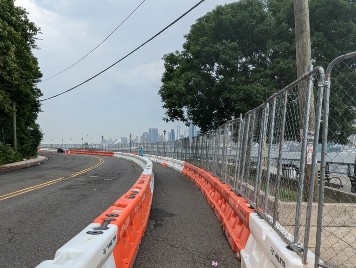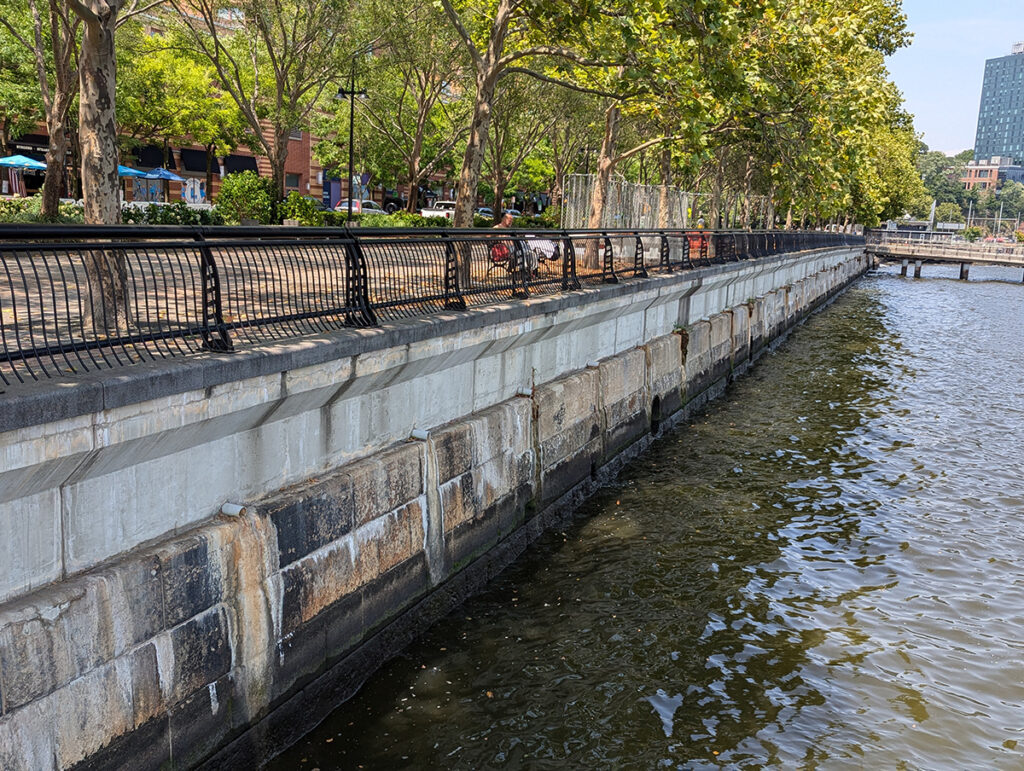
More than a century ago, North German Lloyd Lines built a massive stone bulkhead at Hoboken’s South Waterfront that still stands today, despite the relentless currents and tides of the Hudson River. Other portions of Hoboken’s waterfront have not fared so well.
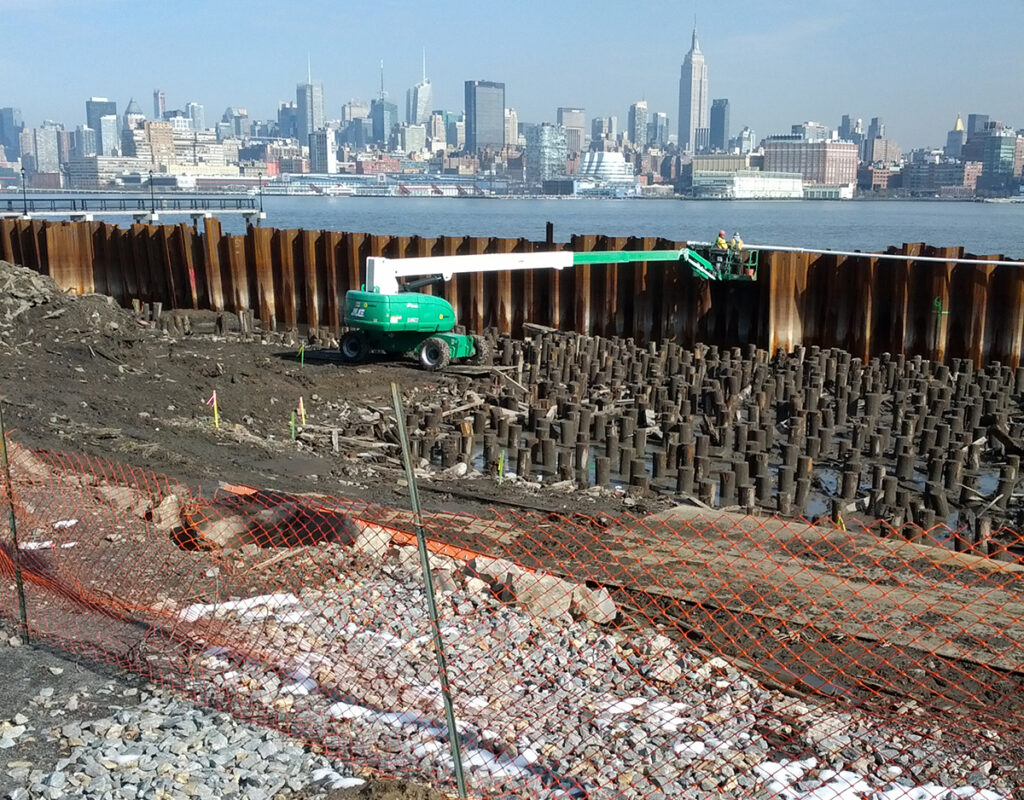
In 2009, a portion of Sinatra Park collapsed, closing off the soccer field and waterfront walkway. The City hired Boswell Engineering in what ended up being a major excavation of the site and repair to the bulkhead and the pile-supported platform that comprised a sizable portion of the park. A February 8, 2011 New York Times article reported, “The park, with a heavily used soccer field and riverfront walk, sits on century-old timbers that were riddled with shipworms, or teredos, tiny mollusks that bore into wood.”
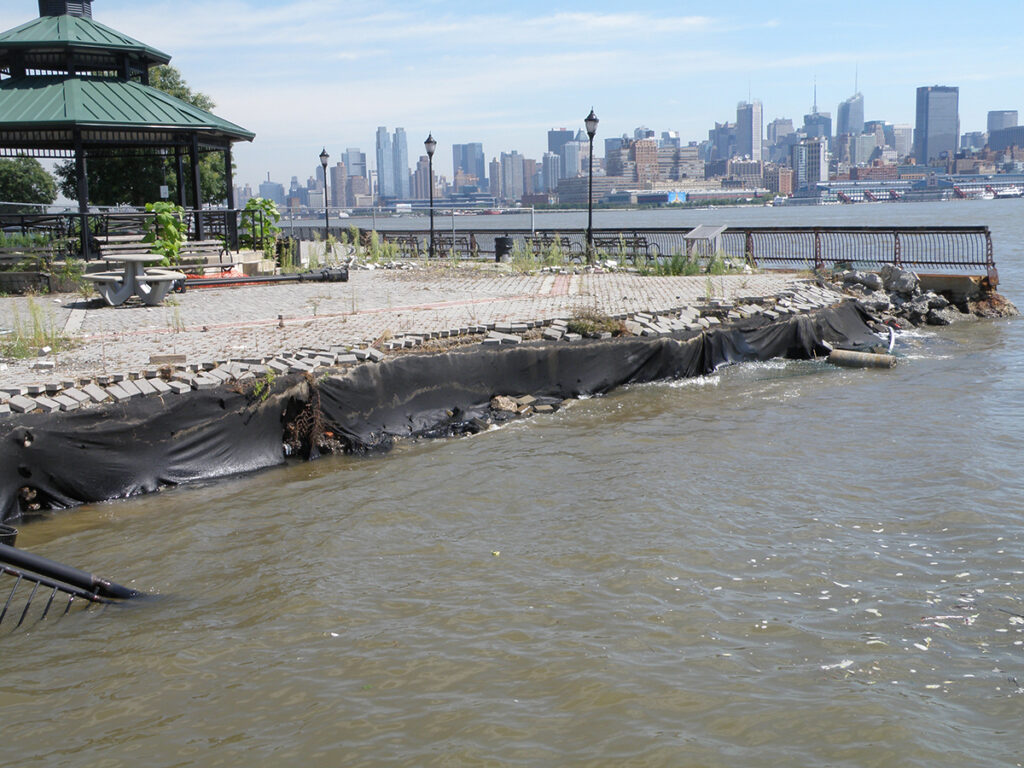
In that same year, the south end of Castle Point Park, just north of the Stevens Institute parking area, collapsed into the Hudson River, requiring a major rebuild. This waterfront park had been constructed just a decade earlier. The City of Hoboken hired Boswell Engineering to work on this project as well.
The following year, in October 2010, a Jersey Journal headline exclaimed, “Gaping sinkhole on Sinatra Drive in Hoboken widens, officials say.” The sinkhole, located near 13th Street at the Shipyard Project, measured 50 feet long, 25 feet wide and 8 feet deep. The roadway had been built just 13 years earlier.
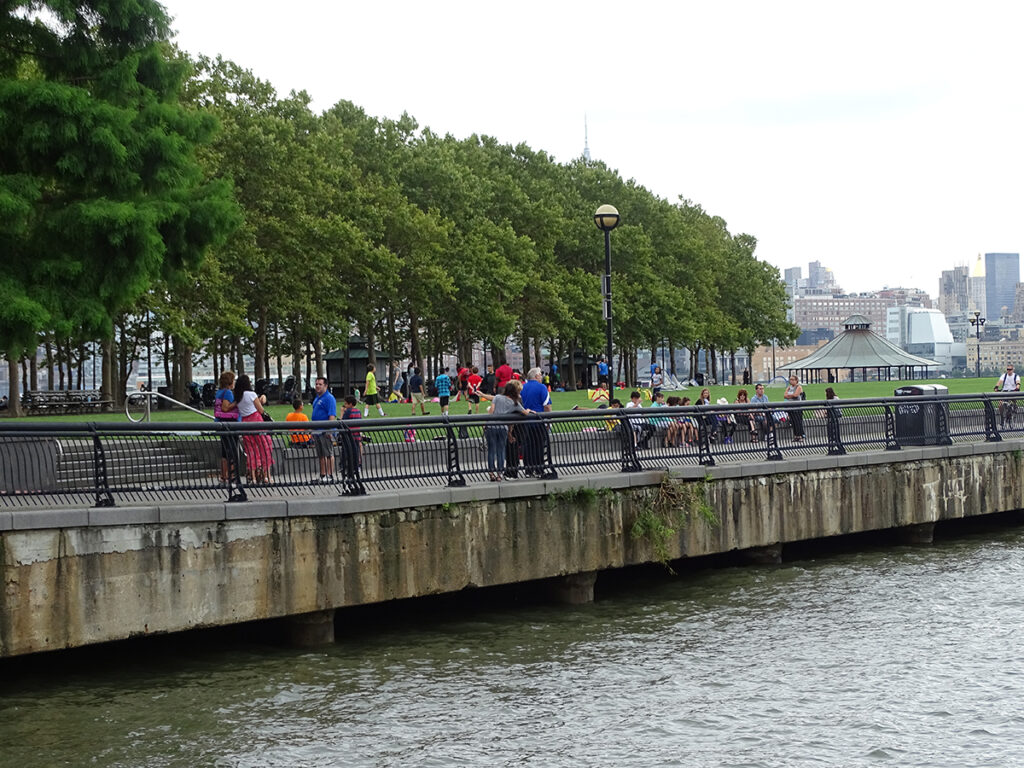
In the 1990s, the Port Authority of NY & NJ began work on Pier A Park and the promenade at Hoboken’s South Waterfront. To stabilize Pier A, they jacketed some 1500 steel piles that supported the pier in concrete. By 2010, however, some of the mud below the concrete had washed away, exposing the steel to the corrosive saltwater of the Hudson River. Construction crews worked for months below the 5-acre pier to encase the exposed steel with additional concrete.
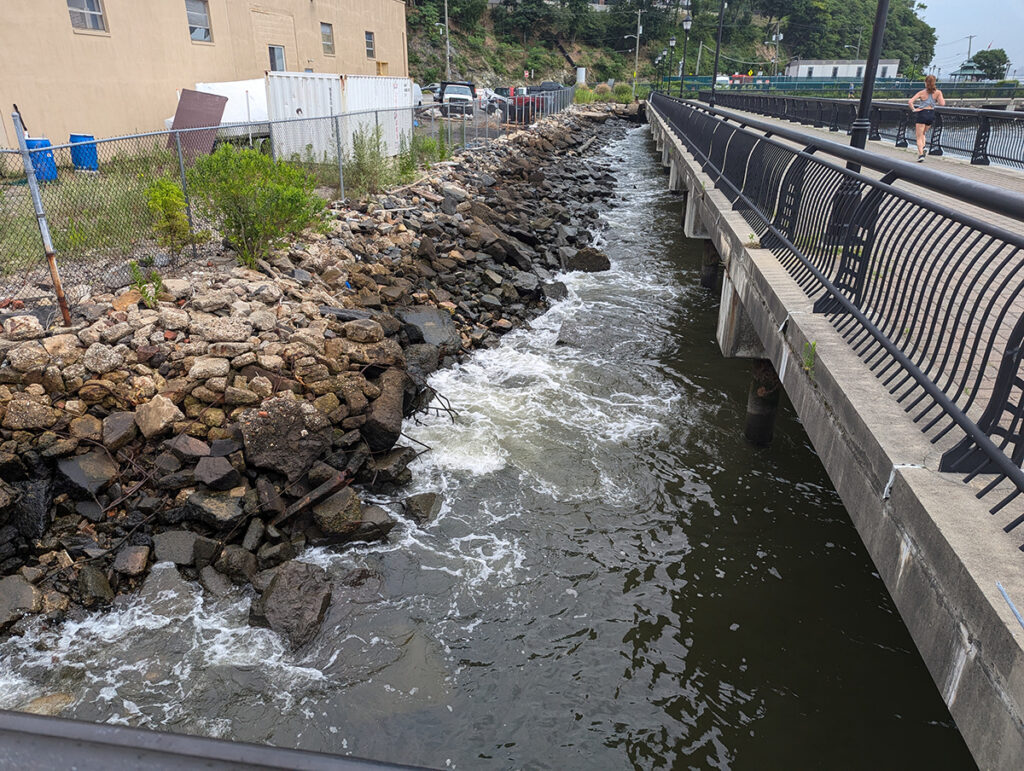
In 2002, Stevens Institute of Technology received two federal grants to build its 840 linear foot portion of the Hudson River Waterfront Walkway connecting Castle Point Park to Sinatra Park. Rather than building the walkway on land and establishing a stable bulkhead below, this engineering school chose to build the walkway on piles over the Hudson River, thus missing an opportunity to stabilize the shoreline. At some point in the future, the bulkhead will need to be built at considerable expense.
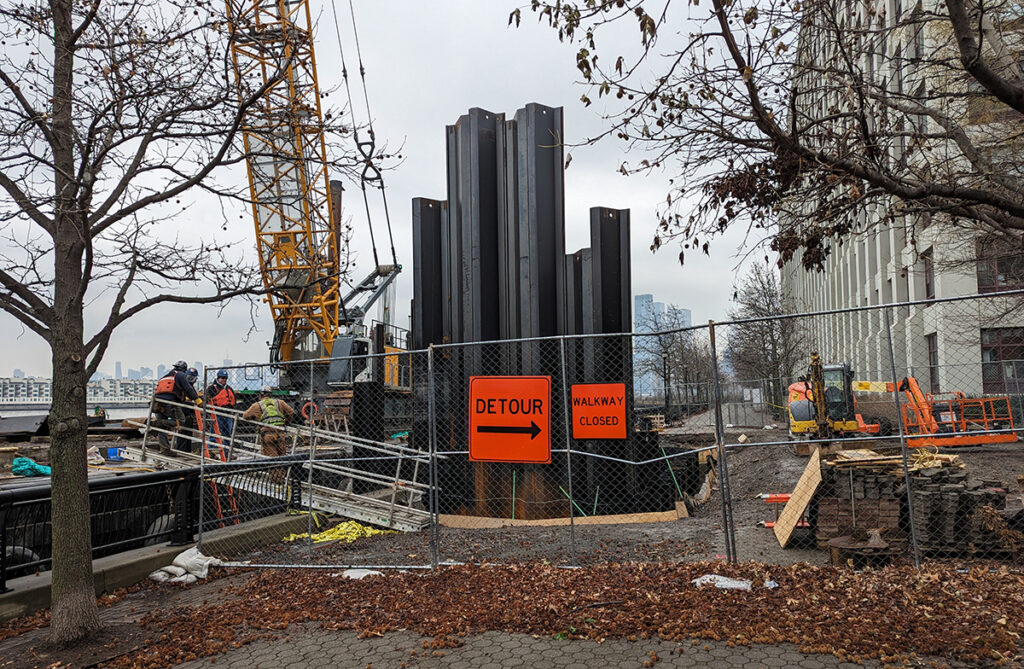
For the past year, a section of the Hudson River Waterfront Walkway has been under repair north of the Hudson Tea Building. The bulkhead and decking are both being repaired by the Condo Associations which are responsible for maintaining the state-mandated walkway at their property.
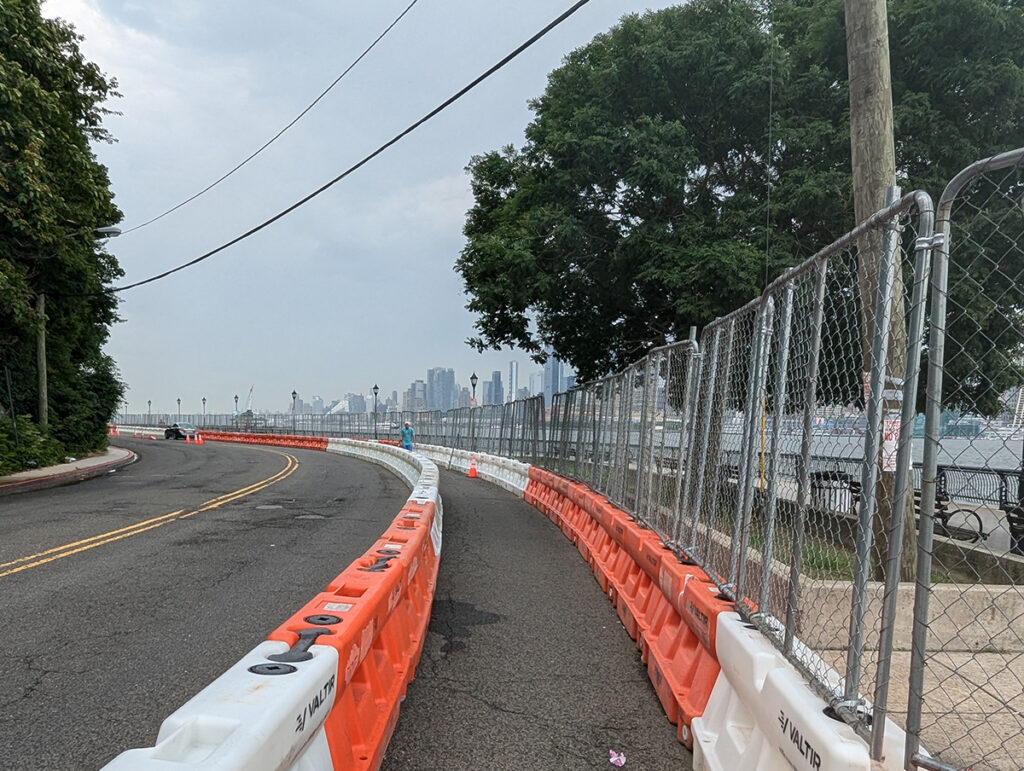
A recent sinkhole along Sinatra Drive near the Skate Park, south of the Union Dry Dock site, prompted the City of Hoboken to hire an engineering firm to conduct an inspection of the bulkhead from First Street to Fifteenth. As a precautionary measure, the City has closed off major sections of the waterfront and Hudson River Waterfront Walkway until the assessment of the conditions is completed. This was done before the large crowds gathered to view the Fourth of July fireworks display.
Related Links
First addition to Hoboken’s linear waterfront park since 2007 at the Weehawken Cove will protect against future storm surges
The Weehawken and Hoboken Coves provide opportunities for ecosystem restoration and greater waterfront access
Hoboken model to mitigate flooding dependent on massive gov’t support as costs rise and major rain storms intensify
Plan for the Hoboken Waterfront


